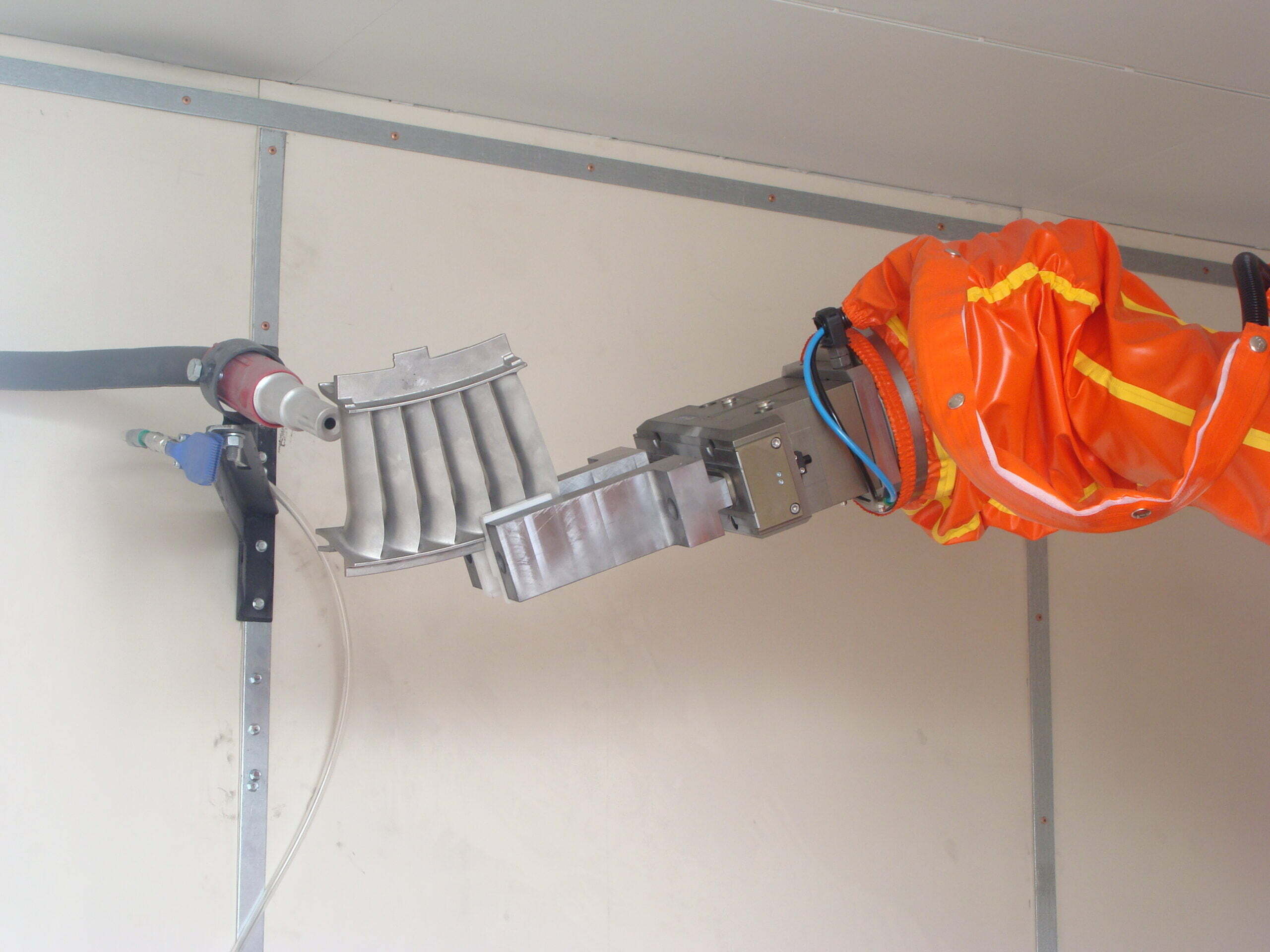One of the widely used surface finishing processes of materials is sandblasting. This technique allows to operate in specific conditions and needs, guaranteeing even more advantages when applied by automatic sandblasters.
How do they work and what are the benefits of their functions? Find out in this in-depth analysis, through the Arcos experience.
Table of Contents
What is sandblasting?
Sandblasting is a process of finishing the surface of materials that allows you to work the first surface layer of an object through the direct action of a jet of high pressure air and abrasive material, such as silica or sand.
For what reasons is sandblasting performed?
The reasons why this specific process is used for finishing are many, which can be summarized in three main functions:
- Homogenize the surface.
Many details come out of some processes (such as grinding or deburring) with important roughness: sandblasting makes it possible to homogenize the furrows and ridges that have arisen.
Without this fundamental step, there is a risk that the surface of the details, full of peaks and ridges, will break as soon as it is put under pressure. Homogenizing the roughness, therefore, allows to preserve the life of the objects over time.
- Machining complex geometries with precision.
The use of abrasive powders allows you to reach all the irregular spaces on the surface of an object, whatever its shape. This advantage is not practicable through the use of abrasive belts which, while performing the same function, are effective only with less complex piece geometries.
This is the reason why sandblasting is widely used in the aerospace field: the elements intended for this sector will undergo high efforts and it is essential to reduce the chances of them breaking and, therefore, the risk of accidents. In the presence of very complex geometry, sandblasting successfully removes burrs even in places that seem unreachable.
- Homogenize the paint.
Sandblasting is also carried out on finished products which, once painted, have defects and require a new painting.
When the details come out of the mechanical processing they can have surface defects: the product in contact with air, in fact, creates small encrustations; this is because the immediate passage to the painting involves small defects and the paint doesn’t adhere perfectly to the piece.
Sandblasting, therefore, allows the surface to be re-homogenized by removing the irregularities present, to proceed with a new perfectly adherent paint.
Similar but different processes from sandblasting: some important distinctions
Tumbling
A process that is carried out to fulfill the first function of sandblasting – homogenizing the surface of the objects – is tumbling.
This mechanical technique consists in introducing the workpiece into a container with abrasive elements; the movement of the container, and therefore the rubbing between the surface of the piece and the abrasive material, allows you to remove the roughness of the object.
This process differs from sandblasting in that it involves the risk of impacts not suitable for processing sensitive products. Furthermore, it takes a long time with less detailed, uneven and inaccurate results: it’s mainly used for poor products.
Shot peening
Shot peening is conceptually very similar to sandblasting, but has significant differences. In fact, this process involves the use of compressed air which, by means of a gun and nozzle, is channeled by firing ceramic or glass balls that work the surface of geometric pieces larger than sandblasting.
It’s used to give mechanical properties to the piece: a cold plastic deformation is created which increases particular mechanical properties of the product, such as plasticity (i.e. resistance to deformation, without causing breakage).
How many sandblasting systems are there?
There are mainly two sandblasting systems:
- To loss. The abrasive material that is shot onto the workpiece is not then reused for the same function.
- With recirculation. The minerals or balls used by the casting are collected in a funnel and sieved to remove the burrs removed in the process. Once recovered and sieved, they are fired again for a new circle.
To carry out the sandblasting, a compressed air gun is used which has a pressure of 4-5-6 bar and a flow rate of 3,000 liters of air per minute. The mineral or balls useful for abrasion flow from the gun: to ensure that the gun does not wear out quickly over time, particular minerals such as tungsten carbide or boron carbide are used.
The Arcos experience in sandblasting
Arcos is a world leader in the production of robotic systems for surface finishing, for sandblasting it mainly deals with its integration. Working in automation, in fact, there have been many situations in which customers have requested this specific operation and for which a satisfactory solution has been provided.
Arcos has been providing integration through robots for years, relying on sandblasting professionals who define the technical part of the process. Arcos automatic sandblasters are an application of great technological innovation: the robot manages the gun on the wrist to perform the workpiece in an optimal way. One of the main advantages lies in the ease of movement since the robots used have 6 axes.
Automatic sandblaster for the aerospace
Arcos additions are strongly requested especially for the sandblasting of parts intended for aerospace.
A concrete example can be seen in this case study, where the robotic system performs the automatic sandblasting of aeronautical parts. It’s possible to observe how the robotic arm maneuvers the pieces around the jet of air and sand, in such a way as to regulate the processing in detail on the entire surface of the element.
Conclusions
The sandblasting process allows to homogenize the surface of the objects, even when in the presence of more complex geometries or for the removal of a damaged paint. There are other techniques similar to this, but none guarantee the results obtainable through automatic sandblasters. The robotic integrations provided by Arcos in the sandblasting systems allow a fast, safe and precise process.
Would you like advice tailored to your needs? Contact us: our technicians will be at your disposal to answer your curiosities.


